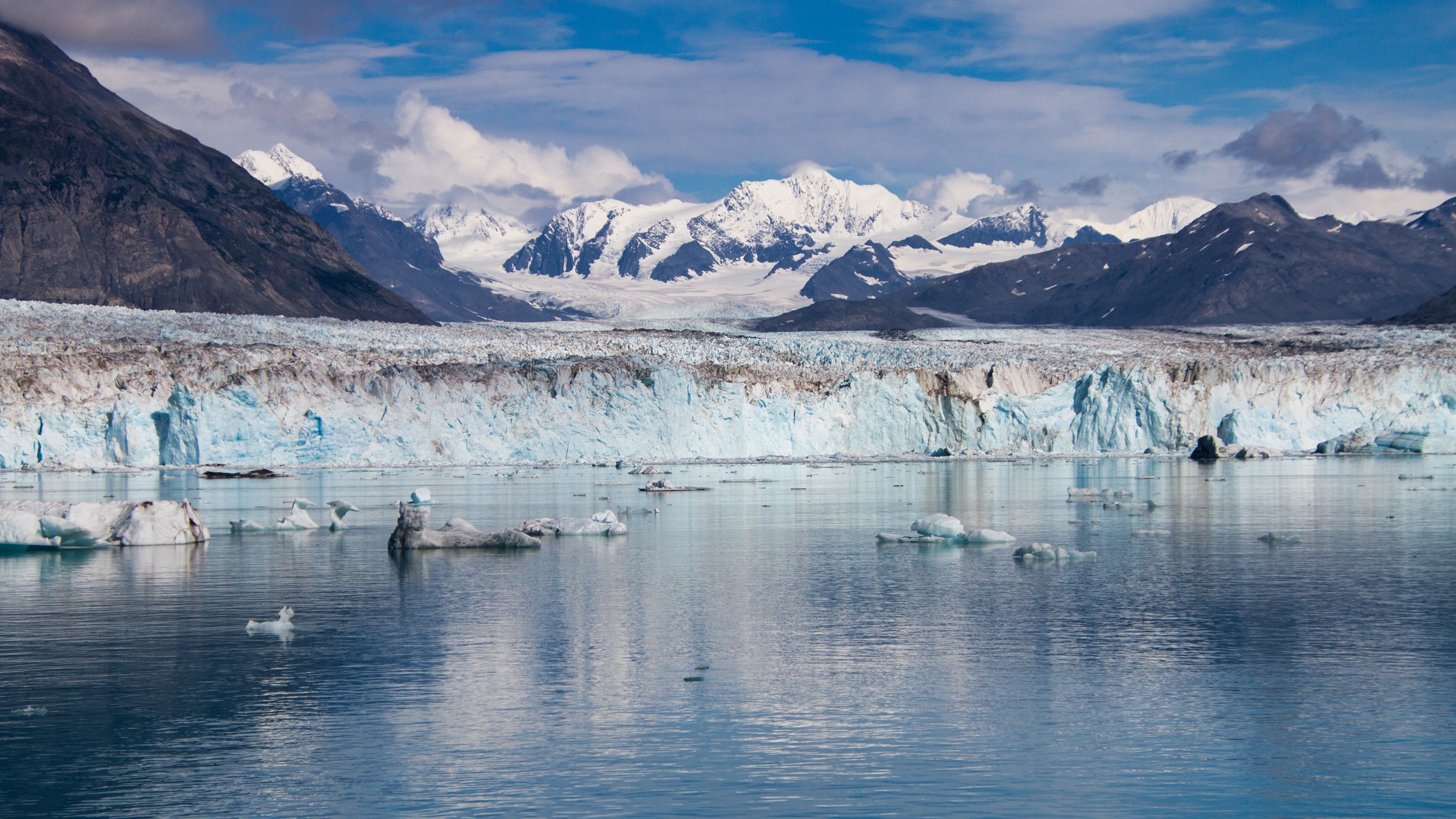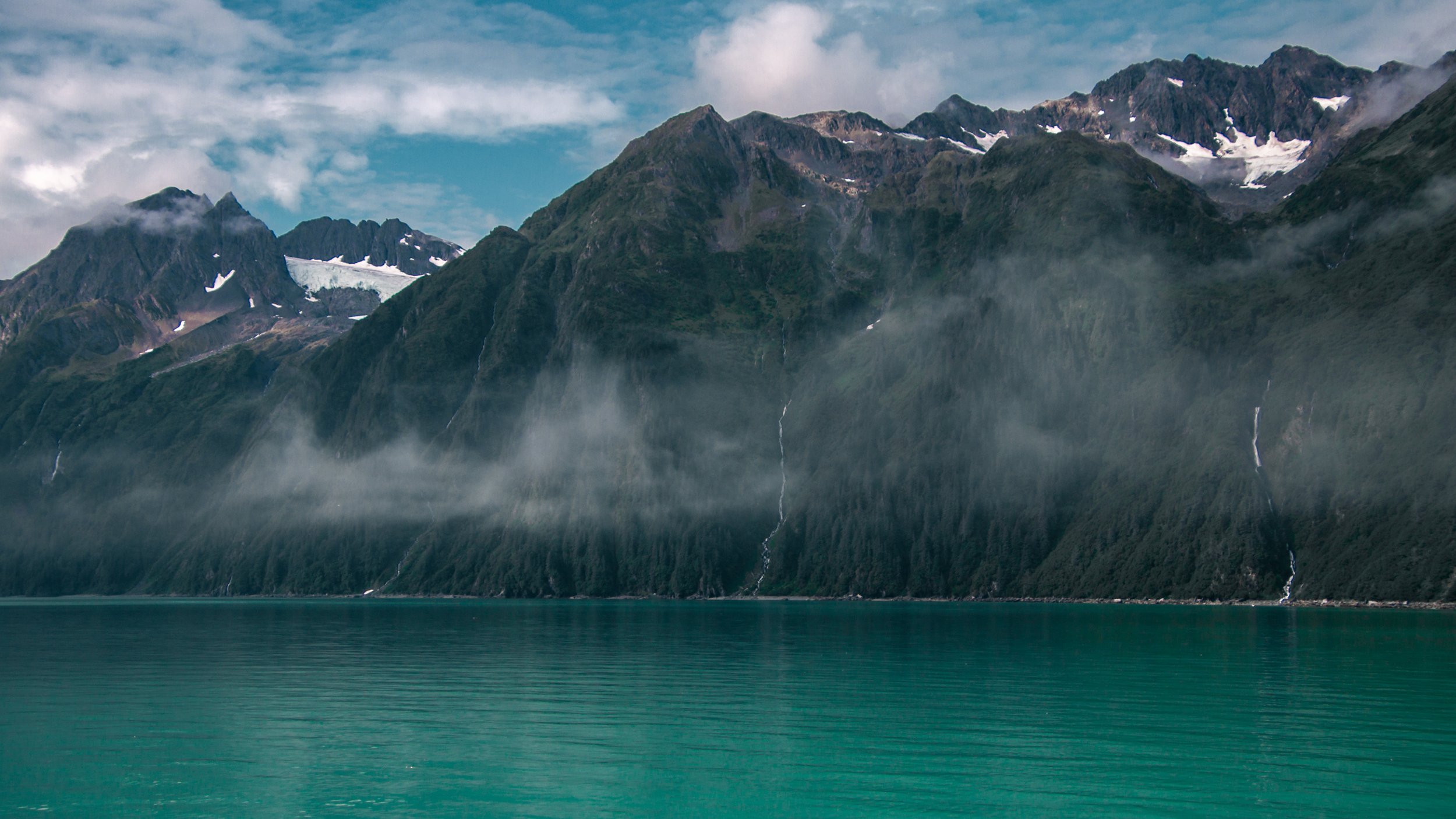
Types of Glaciers
·Calving Glacier: A glacier with a terminus that ends in a body of water (river, lake, ocean) into which it calves icebergs.
·Cirque glacier: A small glacier that forms within a cirque basin, generally high on the side of a mountain.
Hanging glacier: A glacier that originates high on the wall of a glacier valley and descends only part of the way to the surface of the main glacier. Avalanching and icefalls are the mechanisms for ice and snow transfer to the valley floor below.
·Ice Cap: A dome-shaped accumulation of glacier ice and perennial snow that completely covers a mountainous area or island, so that no peaks or Nunataks poke through.
Ice Field: A continuous accumulation of snow and glacier ice that completely fills a mountain basin or covers a low-relief mountain plateau to a substantial depth. When the thickness become great enough, tongues of ice overflow the basins or plateaus as Valley Glaciers.
·Ice Sheet: A thick, subcontinental to continental-scale accumulation of glacier ice and perennial snow that spreads from a center of accumulation, typically in all directions. Also called a Continental Glacier.
Piedmont glacier: A fan or lobe-shaped glacier, located at the front of a mountain range. It forms when one or more valley glaciers flow from a confined valley onto a plain where it expands. The 30-mile wide Malaspina is the largest in Alaska.
Polar Glacier: A glacier with a thermal or temperature regime in which ice temperatures always remain below the freezing point.
Reconstituted Glacier: A glacier formed below the terminus of a hanging glacier by the accumulation, and reconstitution by pressure melting (regelation), of ice blocks that have fallen and/or avalanched from the terminus of the hanging glacier. Also called Glacier Remaniè.
·Rock Glacier: A glacier-like landform that often heads in a cirque and consists of a valley-filling accumulation of angular rock blocks. Rock glaciers have little or no visible ice at the surface. Ice may fill the spaces between rock blocks. Some rock glaciers move, although very slowly.
·Temperate Glacier: A glacier with a or temperature-regime in which liquid water coexists with frozen water (glacier ice) during part or even all of the year.
Tidewater Glacier: A glacier with a terminus that ends in a body of water influenced by tides, such as the ocean or a large lake. Typically, tidewater glaciers calve ice to produce icebergs.
·Valley Glacier: A glacier that flows for all or most of its length within the walls of a mountain valley. Also called an Alpine Glacier or a Mountain Glacier.












